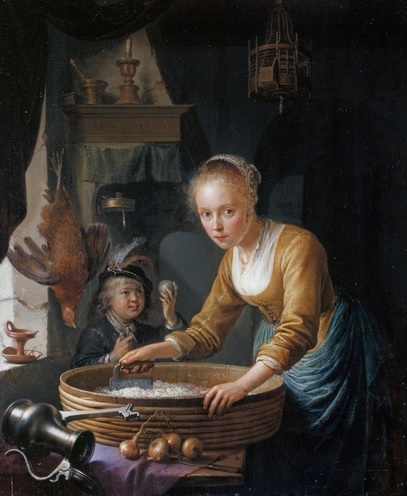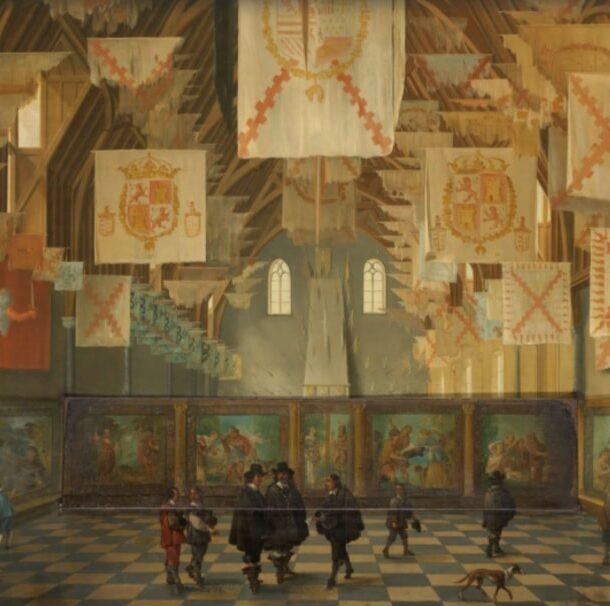
The work of the Dutch Baroque painter Hendrik Gerritsz depicts, in the form of an allegory of tulipomania, the evils of greed. In the 17th century in the Netherlands there was a speculative bubble, tulipomania, considered the first financial crisis of its kind in Europe. Specifically, it shows the flower goddess travelling with the weavers of Haarlem who are distributing tulips, including three men drinking and weighing money and two women in a kind of chariot moved by the force of the wind. The symbols represented by the bird and the clock without hands seem to suggest that the sailing carriage will end up in the sea.
Collection: Images
Project: 3. Rural world and urban world in the formation of the European identity., 4. Family, daily life and social inequality in Europe.
Chronology: XVII
Scope: Secondary Education, Baccalaureate, University
Link: https://commons.wikimedia.org/wiki/File:Hendrik_Gerritsz._Pot_001.jpg
Resource type: Image
Format: Oil on panel (61 x 83 cm)
Source: Frans Hals Museum
Language: English
Date: 1637-38
Owner: Daniel Maldonado Cid (Modernalia)
Identifier: os I-286
Copyright: Dominio público. The Yorck Project (2002) 10.000 Meisterwerke der Malerei (DVD-ROM), distributed by DIRECTMEDIA Publishing GmbH. ISBN: 3936122202.
Abstract: A work by Hendrik Gerritsz depicting the evils of greed in the form of an allegory. It depicts the peasantry and certain popular customs.
Tags






